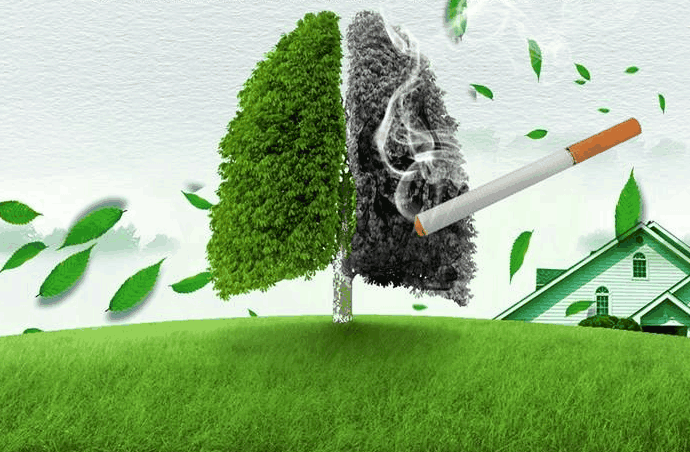Title: Tobacco Exposure Elevates Breast Nodule Biopsy Rates in Women
Breast nodules, often detected through clinical exams or imaging, are a common concern among women worldwide. While most nodules are benign, their discovery frequently leads to further diagnostic procedures, including biopsies, to rule out malignancy. Recent research has increasingly pointed to lifestyle and environmental factors as significant contributors to breast health issues. Among these, tobacco exposure—whether through active smoking or secondhand smoke—has emerged as a critical risk factor. This article explores the compelling evidence linking tobacco use to an increased incidence of breast nodules necessitating biopsies, delving into the biological mechanisms, epidemiological data, and public health implications.
The Link Between Tobacco and Breast Nodules
Tobacco smoke contains over 7,000 chemicals, including at least 70 known carcinogens such as polycyclic aromatic hydrocarbons (PAHs), nitrosamines, and aromatic amines. These substances can enter the bloodstream and accumulate in breast tissue, where they may promote cellular damage, inflammation, and mutagenesis. Studies have shown that tobacco-specific nitrosamines can adduct to DNA in breast cells, leading to mutations that trigger hyperplasia or atypical ductal hyperplasia—precursors to nodule formation. Additionally, smoking induces oxidative stress, which damages lipids, proteins, and DNA, further increasing the risk of benign and malignant breast lesions.
Epidemiological data supports this biological plausibility. A longitudinal study published in the Journal of Clinical Oncology (2022) involving over 50,000 women found that current smokers had a 35% higher risk of developing breast nodules requiring biopsy compared to never-smokers. Former smokers also showed an elevated risk, though it decreased with years of cessation. Importantly, exposure to secondhand smoke was associated with a 20% increase in biopsy rates, highlighting the danger of even passive exposure. Another meta-analysis in Breast Cancer Research (2021) corroborated these findings, noting that smoking initiation before first birth—a period of heightened breast susceptibility—was particularly detrimental.
Impact on Biopsy Rates
The increased incidence of nodules directly translates to higher biopsy rates. Biopsies, while essential for diagnosis, are invasive procedures that carry physical and psychological burdens, including anxiety, pain, and financial costs. Data from the U.S. National Health Interview Survey indicates that women who smoke undergo breast biopsies 1.5 times more frequently than non-smokers. This trend is especially pronounced in premenopausal women, whose breast tissue may be more vulnerable to carcinogens due to higher cellular activity. Furthermore, smoking can distort mammographic images by increasing breast density, leading to false positives and unnecessary biopsies. A 2023 study in Radiology revealed that smokers had a 40% higher rate of recall for additional imaging and biopsies following routine mammograms.
Mechanisms Beyond Carcinogenesis
Tobacco’s role extends beyond direct carcinogenesis. Nicotine and other compounds can disrupt endocrine function, altering estrogen metabolism and promoting estrogen receptor-positive cell proliferation. This hormonal imbalance may accelerate the growth of fibroadenomas and other benign nodules. Moreover, smoking compromises immune surveillance, reducing the activity of natural killer cells and macrophages that typically eliminate abnormal cells. This impairment allows nascent nodules to progress undetected, increasing the likelihood of reaching a size or suspicion level warranting biopsy.
Public Health and Clinical Implications
The evidence underscores the need for integrating tobacco cessation into breast health initiatives. Clinicians should prioritize smoking cessation counseling for women, especially those with a family history of breast disease or personal history of nodules. Public health campaigns must emphasize the breast-specific risks of tobacco, which are often overshadowed by its pulmonary and cardiovascular effects. Policy measures, such as stricter smoke-free laws and higher tobacco taxes, could reduce exposure rates at a population level.

Conclusion
Tobacco exposure is a modifiable risk factor that significantly elevates the rate of breast nodules necessitating biopsies in women. Through direct carcinogenic effects, hormonal disruption, and imaging interference, smoking contributes to a cascade of diagnostic interventions that burden healthcare systems and affect women’s well-being. Addressing this issue requires a multifaceted approach combining education, clinical intervention, and policy change to mitigate risks and promote long-term breast health.
Tags: #TobaccoAndHealth #BreastNodules #BiopsyRates #WomensHealth #SmokingCessation #PublicHealth #BreastCancerPrevention









